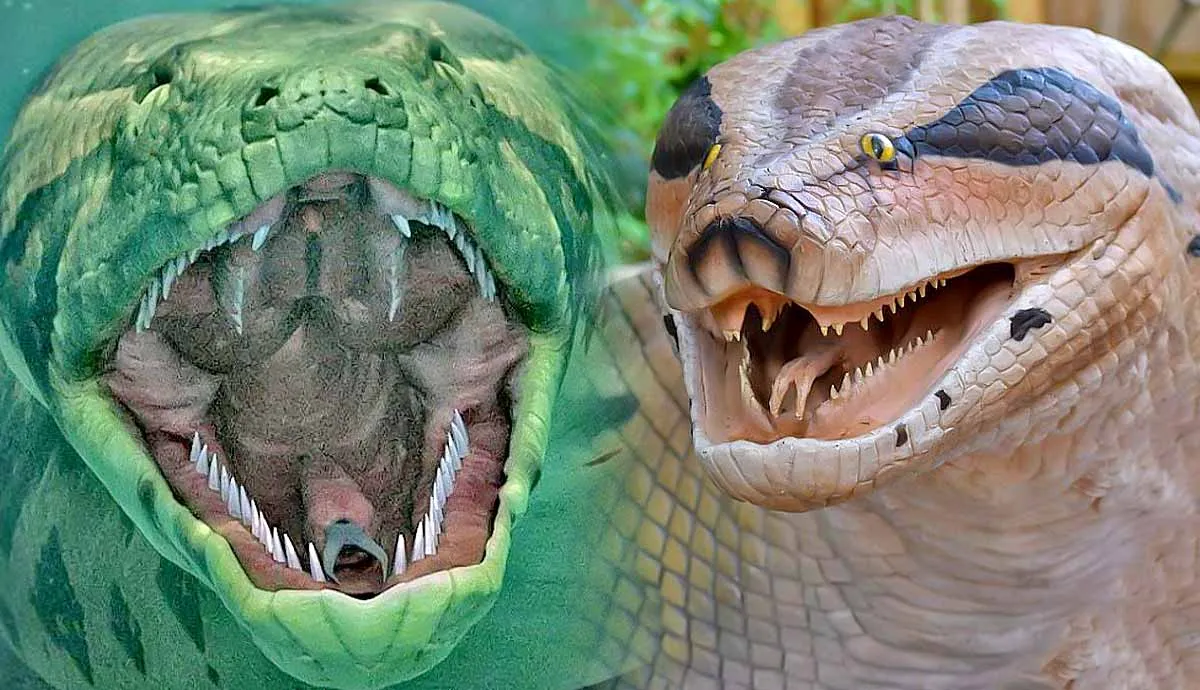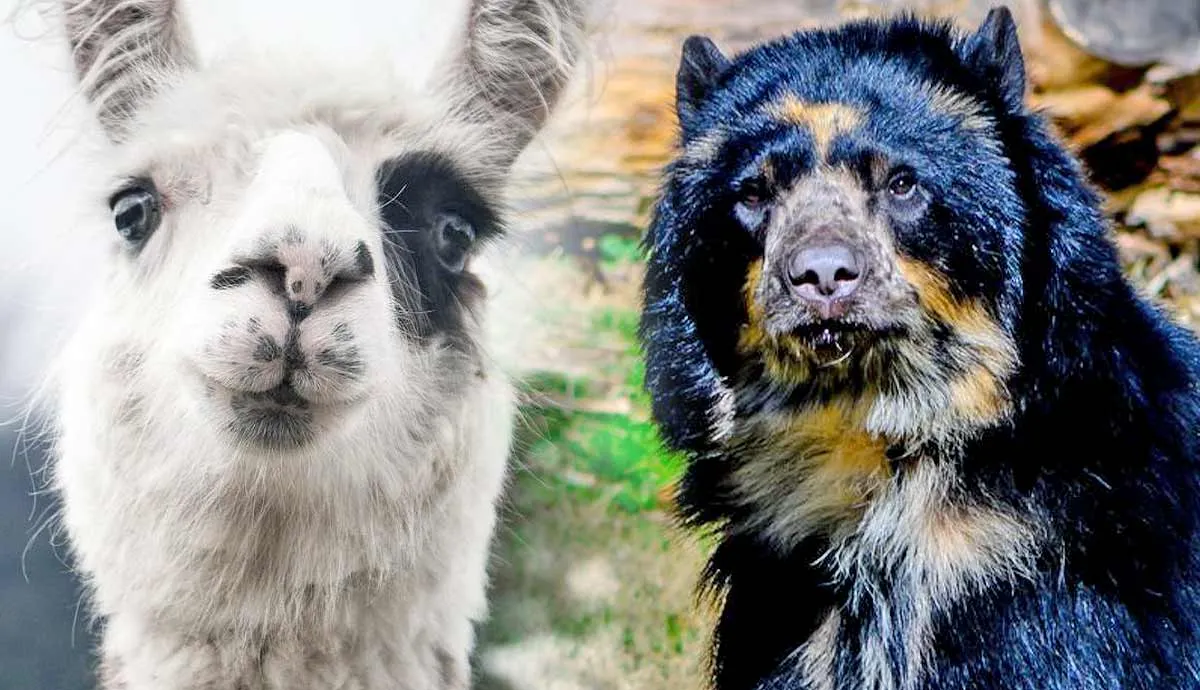Waiting in the murky waters of the tropical rainforests, the anaconda lives an elusive life. Mostly out of the way of human interference, much about these snakes remains a mystery.
However, scientists work to learn more and more about the anaconda each year, and some of these facts may surprise you.
Check out the following interesting facts about the anaconda.
Green Anacondas are the Largest Snake Species
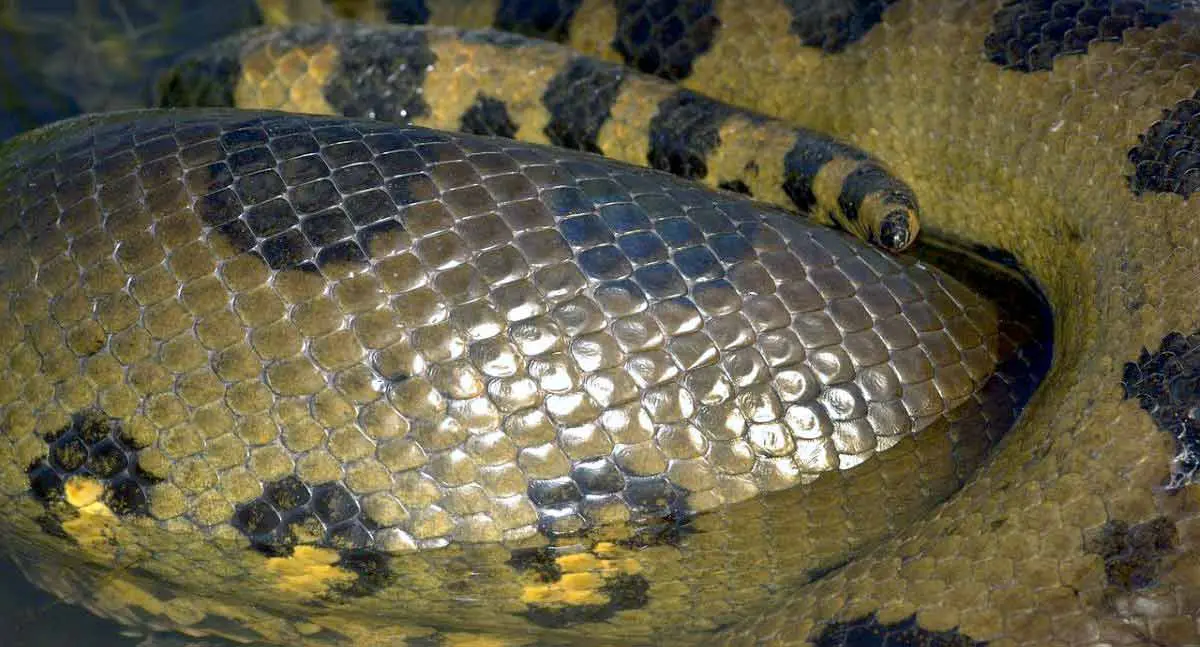
Anacondas can reach an astonishing 30 feet in length and weigh up to 550 pounds. These snakes can be around 12 inches in diameter. Females typically grow larger than males. The only snake discovered with comparable proportions is the extinct Titanoboa.
These massive snakes can easily open their mouths wide enough to swallow animals as large as a crocodile! The green anaconda and the southern anaconda are the only two species of this type of boa constrictor. The green anaconda is the larger of the two; its olive skin and black, oval-shaped spots are what you typically imagine when you hear the word anaconda.
They’ve Been Spotted in Florida

Green anacondas are native to South America. They prefer tropical wetlands where they can lurk in the waters, hunting prey and digesting their large meals. In South America, they mostly dwell in the Amazon River and on the island of Trinidad.
However, between 2004- 2019 there have been at least 8 official observations of anacondas in Florida.
Officials believe these sightings are due to pet releases. People often get exotic snakes like ball pythons and anacondas as pets as babies. When these snakes grow large, people release them into the wild because they become harder to handle.
These non-native snakes become problematic in the wild. They may take the habitat of native species and compete with them for food. However, they are not numerous enough to be a cause for concern currently.
Their Squeeze is Stronger than an Alligator’s Bite
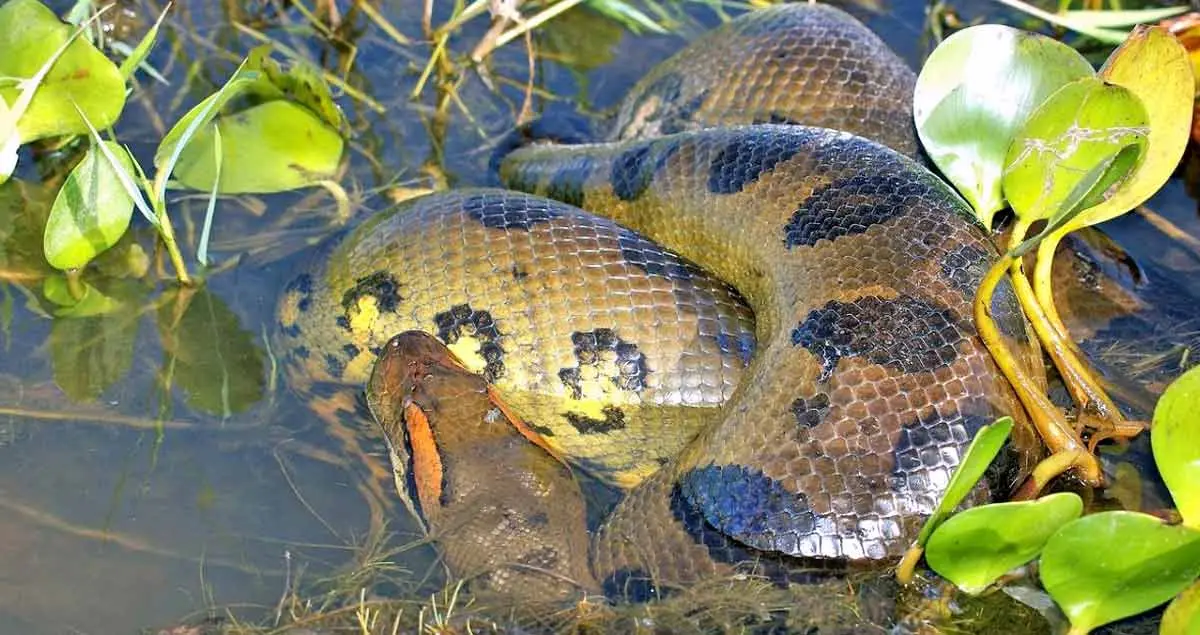
The anaconda is not venomous. When they find prey, they grab hold of it with teeth shaped like backward hooks. If the prey is small, their jaws can snap it, and the snake can easily swallow it whole.
If the prey is large, they will hide in the murky waters waiting to ambush them. Then, they will strike, wrapping their massive body around their victim. They produce 9,000 psi of pressure within their coils. In comparison, an alligator’s bite produces around 3,000 psi.
Anacondas don’t need to eat very often because they have slow metabolisms. They usually only eat once every few weeks.
No Documented Cases of Anacondas Eating Humans

Perhaps you’ve heard stories about anacondas eating humans. It’s natural for people to fear a snake large enough to kill people. There has been no official documentation of an anaconda eating a human. Anacondas are reclusive. They prefer to hide rather than stalk a human.
In a shocking stunt in 2014, Paul Rosalie, an animal conservationist, attempted to get a green anaconda to eat him alive. The snake coiled around him a few times while he was wearing a protective suit. However, he was not swallowed. He claimed his actions were to bring awareness to the declining habitat of the green anaconda. Yet, his actions caused many animal rights activists to question and condone his methods.
On the contrary, humans are the anaconda’s most dangerous predator. People hunt anacondas for their skin. They also kill these large snakes simply because they fear them.
Anacondas Give Birth to Live Babies

Mating season occurs between March to May, the dry season in their native habitat. Green anacondas are sexually mature at about 3-4 years of age.
The anacondas form a group to breed in or near the water. There can be up to 13 males in a group mating with one female. The males ball up and compete to copulate with the female. The female mates with several males in the ball during this time.
When mating is complete, the female may eat one or two males to sustain her through a seven-month-long gestational period. The female will give birth to around 14-82 live babies. They emerge from their mother already measuring 2 feet in length.
The young can hunt, feed, and swim shortly after birth. When the green anaconda is young, it still has many predators. Foxes, lizards, and even other anacondas make these young babies a meal.
Conclusion
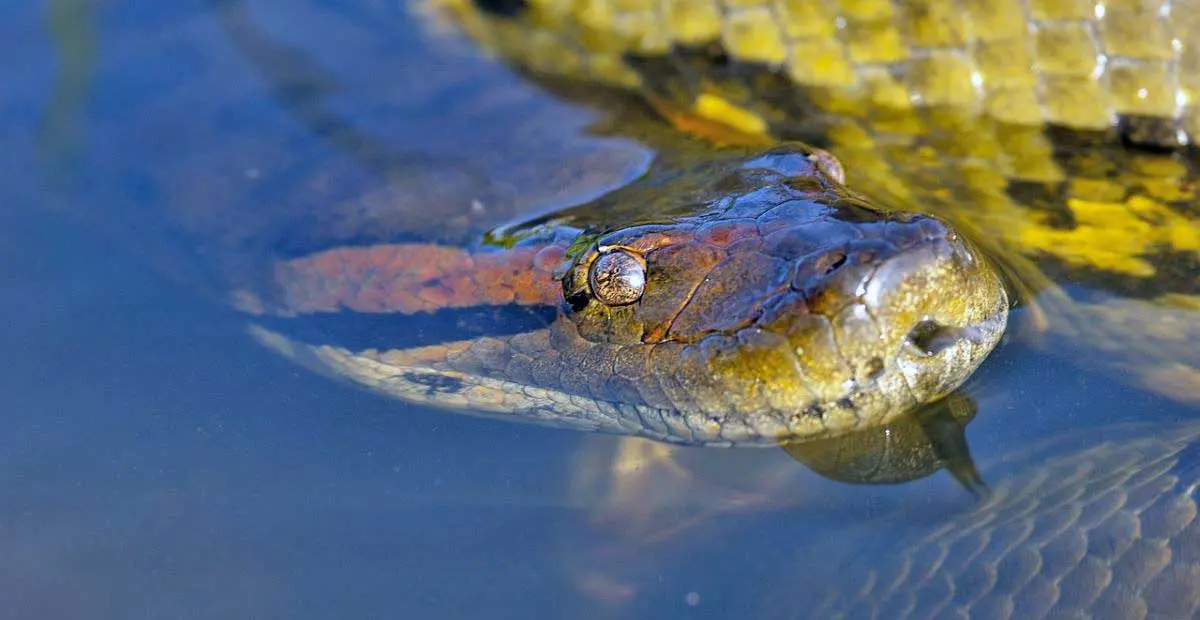
The anaconda is an apex predator of the Amazon River. This snake can easily take down large prey, yet they prefer a solitary and sluggish lifestyle hanging out in the water. These beautiful snakes are a testament to the diversity of life on Earth. Even though their massive size may be frightening, humans are more of a threat to this snake than they are to us.
As the habitats of the green anaconda become encroached on by humans, it's important to improve conservation efforts to keep this species alive and well.


